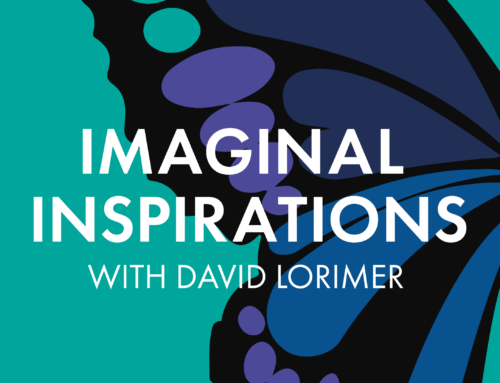Abstract
This paper carries forward the author’s contribution to PBMP‘s previous special issue on Integral Biomathics (Rosen 2015). In the earlier paper, the crisis in contemporary theoretical physics was described and it was demonstrated that the problem can be addressed effectively only by shifting the foundations of physics from objectivist Cartesian philosophy to phenomenological philosophy. To that end, a phenomenological string theory was proposed based on qualitative topology and hypercomplex numbers. The current presentation takes this further by delving into the ancient Chinese origin of phenomenological string theory. First, we discover a deep connection between the Klein bottle, which is crucial to the theory, and the Ho-t’u, an old Chinese number archetype central to Taoist cosmology. The two structures are seen to mirror each other in expressing the curious psychophysical (phenomenological) action pattern at the heart of microphysics. But tackling the question of quantum gravity requires that a whole family of topological dimensions be brought into play. What we find in engaging with these structures is a closely related family of Taoist forebears that, in concert with their successors, provide a blueprint for cosmic evolution. Whereas conventional string theory accounts for the generation of nature’s fundamental forces via a notion of symmetry breaking that is essentially static and thus unable to explain cosmogony successfully, phenomenological/Taoist string theory is guided by the dialectical interplay between symmetry and asymmetry inherent in the principle of synsymmetry. This dynamic concept of cosmic change is elaborated on in the three concluding sections of the paper. Here, a detailed analysis of cosmogony is offered, first in terms of the theory of dimensional development and its Taoist (yin-yang) counterpart, then in terms of the evolution of the elemental force particles through cycles of expansion and contraction in a spiraling universe. The paper closes by considering the role of the analyst per se in the further evolution of the cosmos.
1. Contemporary physics, archetypal numbers, and the Ho-t’u
In recent decades, there has been little meaningful progress in mainstream physics toward a theory that would effectively unify all the forces of natured – the quantum mechanical forces as well as gravitation. Musing ironically on this, physicist Lee Smolin (2006) observed that, “for more than two centuries … our understanding of the laws of nature expanded rapidly …. [yet] today, despite our best efforts, what we know for certain about these laws is no more than what we knew back in the 1970s” (viii). What I demonstrated in my previous contribution to this journal (Rosen, 2015) is that the crux of the problem lay in quantum mechanics’ most basic term: ħ, the quantum of action. Although this indivisible atom of process found at the sub-microscopic Planck length of 10�35 m constitutes the cornerstone of more than a century of successful experimentation in physics, it also marks the end of the road for classical analysis, since here the analytical continuity of space gives way to a “graininess” or discreteness that admits of no further quantitative determination. Moreover, the indivisibility of quantized action is closely tied to an indivisibility of observer and observed, and this implicit inseparability of subject and object is anathema to the program of objective analysis that had gone unquestioned for centuries. While physicists have been able to use probabilistic methods to work around the underlying difficulty when their investigations are limited to the quantum mechanical forces, the problem has proven intractable when gravitation must be included in order to realize a comprehensive account of nature.
Reflecting on the persistent failure of physics to arrive at a workable theory of quantum gravity, Smolin called for a different style of doing physics, a “more reflective, risky, and philosophical style” (2006, 294) that confronts “the deep philosophical and foundational issues in physics” (290). I applaud this call for a more philosophically oriented physics, and I propose that the stalemate in physics suggests it will no longer be possible for us to rely on the old philosophical foundation. That is because the fusion of subject and object encountered at the heart of quantum physics profoundly conflicts with the currently dominant philosophy of science, presupposing as it does a sharp division of subject and object. In my 2015 essay, I described in detail a new foundation for contemporary physics: phenomenological philosophy, an approach in which the intimate interaction of subject and object is accepted as fundamental. Although phenomenology remains important in the present paper, it shares the spotlight with a much older philosophical tradition, one that in fact influenced Martin Heidegger and Maurice Merleau-Ponty, two of the leading figures in the phenomenological movement. As philosopher Stephen Priest put it:
Much of what we have thought of as Heidegger’s originality is essentially Taoist and Zen and the ramifications of this through Heidegger’s influence on Merleau-Ponty’s corpus have yet to be identified …. Heideggerian ‘Modern Continental Philosophy’ should no longer be studied in abstraction from its East Asian ground (2003, 243).
The picture of nature advanced by Taoism some twenty-five hundred years ago was of a cosmos in constant cyclical flux. Its ebb and flow of energies was expressed by the paradoxical dynamics of two opposing but interpenetrating forces: yang is the active force related to brightness, positivity, expansion and masculinity; yin is the passive medium associated with darkness, negativity, contraction, and femininity. Operating in close harmony, yin and yang generate patterns of change that are specified by the trigrams and hexagrams depicted in the oldest text of classical China: the I Ching or Book of Changes. And the system of transformations set forth in the I Ching is closely related to a primal pattern of action known as the Ho-t’u. In the next section, we will see the significance of the Ho-t’u for contemporary physics, but before I proceed to examine this archetypal configuration, let me clarify my use of the term “archetype,” and discuss the general meaning of archetypal numbers.
In the psychology of C. G. Jung, archetypes are structures of the “collective unconscious” imprinted in nature at the deepest level. This was Jung’s way of speaking of that which goes beyond the egoic realm of arbitrarily fashioned, finite forms to participate in something more timeless and universal. The prefix arch- comes from the Greek archos, a ruler, and appears in such words as “archbishop” and “architect” (master builder), signifying what is chief or principal. Archaeo- means “ancient” and derives from the Greek arch�e, the beginning, the first. Thus arche denotes what comes first, both in time and importance.
What is the meaning of type? The word stems from the Greek typos, “a blow, the mark of a blow, figure, outline … from typtein, to beat, strike” (Webster’s Unabridged Dictionary). The etymology of “type” therefore suggests action. Putting this together with arche, we can say that an archetype is a primary action pattern, one that is both fundamental and originary. What I am emphasizing here is the dynamic character of the archetype. Therefore, unlike the traditional Platonic sense of archetype as eidos, an absolute, changeless idea or form, I give precedence to viewing the archetype as an elemental process. While it is true that the word “type” has assumed a predominantly static meaning for usd“a symbol; an emblem; a token … [a] general form, structure, plan … a model” (Webster’s Unabridged Dictionary)dmy own use of the term archetype retains the decidedly more active sense of the original Greek typos: “from typtein, to beat, strike.”
Now, before his death, Jung suggested to his colleague, MarieLouise von Franz, that the profoundest expression of archetypal truth may be embodied in certain primordial number patterns. This provided the impetus for Number and Time (1974), von Franz’s account of number as primal quality, as the underlying, energetic organizing principle of the unus mundus, the cosmic field from which less fundamental archetypes become manifest.
Source: Rosen, S. M. (2017). Quantum gravity and taoist cosmology: Exploring the ancient origins of phenomenological string theory. Progress in biophysics and molecular biology, 131, 34-60.


